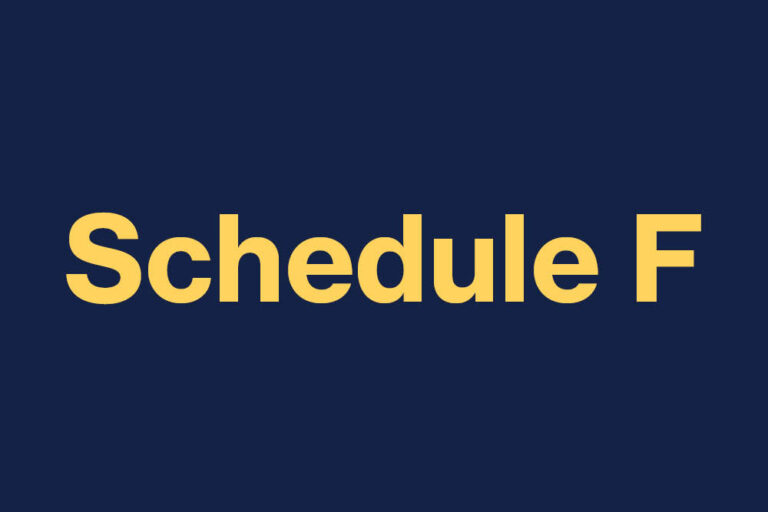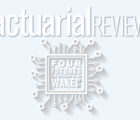
This article is based on a presentation by Lynne Bloom and Dawn Fowle at the Casualty Loss Reserving Seminar in Philadelphia, Pennsylvania, on Tuesday, September 9, 2025.
Times have changed.
It was just a few years back when copy editors replaced a picture of Lassie in our pet insurance presentation with a picture of an owl, because “you don’t own Lassie!”
Fast forward to 2025, when Lynne Bloom and Dawn Fowle have used the F letter 190 times in a professional presentation. 190 times!
If they don’t own the letter F, they certainly appear to like it a lot!
But don’t get too excited about the irreverence of these presenters, because in statutory financial reporting, F stands for Reinsurance.
Schedule F is a transparent risk monitoring framework that provides consistent statutory reporting for regulatory oversight, actuarial evaluation, market stability, and protection of policyholders.
It was introduced in 1988 to standardize and improve reinsurance reporting. Schedule F has been changed over the years in line with the evolution of the reinsurance regulatory framework. Here are two examples of such changes:
- In 2011, the concept of certified reinsurer was introduced. This change allowed non-U.S. reinsurers to post reduced collateral based on their financial strength ratings. Previously, unauthorized reinsurers were required to post 100% collateral.
- In 2019, the definition of reciprocal jurisdiction was introduced. This change allowed domestic insurers to take statutory credit for reinsurance ceded to reciprocal jurisdictions without posting collateral. Reinsurers qualify for reciprocal jurisdiction status if they are from specified geographies such as the EU and U.K. and meet certain financial standards.
There have been additional changes and improvements to Schedule F, which are discussed below.
There are currently six parts to Schedule F:
- Assumed reinsurance — reports the underwriting results of reinsurance assumed from other insurance companies.
- Portfolio reinsurance — reports on portfolio transfers, including amounts transferred and counterparty details.
- Ceded reinsurance — this critical section provides analysis of reinsurers, reinsurance classifications, collateral, disputed recoverables, and penalties for unsecured balances.
- Issuing/confirming banks for letters of credit — enhances transparency of collateral arrangements.
- Interrogatories — helps regulators assess concentration risk and affiliate relationships.
- Restated balance sheet for net credit — summarizes ceded reinsurance balances by reinsurer type.
Though there are many very useful and informative entries across the six parts, Lynne said that Schedule F not reporting on loss corridors is a gap. I thought that was a pun, but Lynne clarified that loss corridors economically act like sliding scale commissions.
This presentation was a refreshing tour through a destination that many actuaries only visit annually and briefly. It was like a newly published travel guide for a place we thought we already knew.
It turns out that there have been many significant improvements to Schedule F over the years.
Did you know that Column 34 of Part 3 (Ceded Reinsurance) contains the AM Best ratings? That is like finding my keys in the key bowl. Why would I have looked there?
I won’t name any names, but I wasn’t the only one in attendance who gasped upon learning this.
The standardization of Column 34 was introduced in 2021 to align Schedule F to the Risk Based Capital framework. More recently in 2024, the accurate classification of reinsurers as authorized, certified, reciprocal jurisdiction, or unauthorized was reinforced.
These more recent changes to Schedule F were all subsequent to the 2008 adoption of the NAIC Reinsurance Regulatory Modernization Framework Proposal that laid the groundwork for future changes to Schedule F and broader reinsurance regulation.
Lynne and Dawn emphasized the Schedule F learning materials with a fun game of “Filing Feud”!
I didn’t realize that Family Feud was a game of individual contributions, so my career strategy of hanging around Morgan Butz, FCAS, MAAA, didn’t help me in this situation.
Here are the things you should know (that I didn’t) if you’d like to play along with your friends:
- Survey: Name a reinsurer classification.
- Answer: Authorized, certified, reciprocal jurisdiction, slow paying, unauthorized.
- Survey: Name something that triggers a provision for reinsurance.
- Answer: Overdue recoverables, insufficient collateral, unauthorized reinsurer, disputed balances, uncollectible recoverables.
- Survey: Name a type of collateral used to support unauthorized reinsurance.
- Answer: Letters of credit, funds held, trust accounts, cash deposits, securities.
- Survey: Name a place in the Annual Statement where Schedule F data flows through.
- Answer: Page 3 — Liabilities, Page 2 — Assets, Underwriting & Investment Exhibit, Notes to Financials, General Interrogatories.
- Survey: Name a reason why a reinsurer might be considered “Secure.”
- Answer: High financial strength rating, certified reinsurer status, reciprocal jurisdiction, adequate collateral, NAIC designation of Secure 1–5.
Thank you to Lynne Bloom and Dawn Fowle for reminding us that learning can be fun! Thank you to YiFan Zhou for skillfully moderating the presentation. Thank you to the CAS for another amazing Casualty Loss Reserving Seminar.
Brian Chiarella, FCAS, is a vice president and principal at Lewis & Ellis-Actuaries and Consultants.













